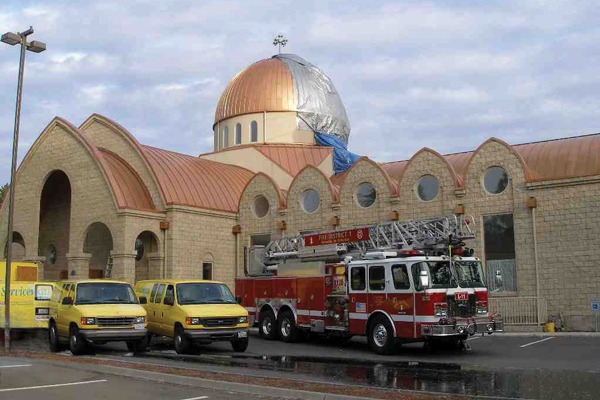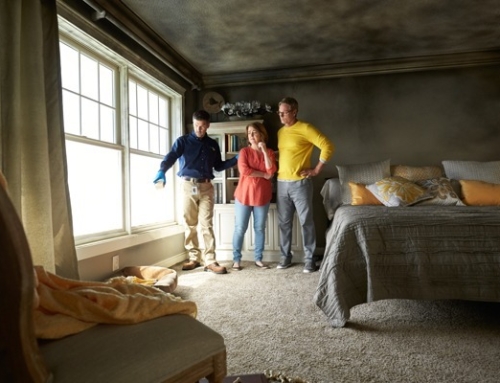A fire can leave more than visible destruction; it can compromise your home’s foundation. Fire can weaken key structural components beyond charred walls and smoke-stained ceilings, making your home unsafe for occupancy. Thorough fire damage cleanup is essential to remove hazardous debris and assess structural stability.
Understanding the hidden dangers and the steps needed for fire damage restoration in Brunswick is crucial for ensuring long-term safety.
Common Structural Issues After a Fire
Depending on temperature, burn duration, and materials, fire affects various structural elements differently. Here are the most vulnerable areas:
Foundation and Load-Bearing Walls
Even if a fire doesn’t visibly destroy your home’s foundation, extreme heat can cause it to crack or shift. Load-bearing walls, which provide crucial support, may suffer from charring, making them unstable. Without proper assessment and restoration, this could lead to future structural failures.
Roof and Attic Damage| Fire Damage Restoration in Brunswick
The roof bears the brunt of rising heat and flames. Wooden beams in the attic can become brittle and lose their load-bearing capacity. If fire damage weakens the roof’s structure, even a minor storm could lead to a collapse.
Structural Steel and Reinforcements
Many modern homes use steel reinforcements in framing. However, at temperatures above 1,100°F, steel begins to warp and lose strength. Even if it looks intact, fire-exposed metal may be compromised and need replacement.
Flooring and Subfloor Issues
Fires often burn from the ground up, weakening wooden or laminate flooring. Even if the surface appears undamaged, underlying support structures may have suffered severe charring, leading to instability.
Hidden Water Damage | Fire Damage Restoration in Brunswick
Firefighters use thousands of gallons of water to control a fire. While this saves the structure, it introduces moisture issues, including weakened drywall, swelling wood, and mold growth, which can further degrade the home’s integrity.
Also read: Handling Water and Smoke Damage During Fire Damage Restoration | Brunswick, GA
Steps for Safe Structural Restoration
Addressing fire damage requires a comprehensive approach to ensure both safety and longevity.
Immediate Structural Inspection
A professional fire damage restoration team will assess all affected areas, from the foundation to the roof, identify compromised materials, and determine the required repairs.
Removing Weakened Materials
Charred wood, melted insulation, and damaged drywall must be removed to prevent further instability and contamination.
Reinforcing and Rebuilding | Fire Damage Restoration in Brunswick
Replacing support beams, reinforcing walls, and restoring flooring ensures the home regains its original structural strength. In some cases, fire-resistant materials may be recommended to prevent future risks.
Addressing Secondary Damage
Any lingering moisture from fire suppression must be addressed to prevent mold growth and further structural weakening. Air quality restoration may also be necessary to remove harmful toxins left behind by smoke and burned materials.
Final Safety Checks and Clearance
Before re-entry, restoration experts conduct a final inspection to confirm the home’s structural safety and ensure it meets building codes and safety standards.
Restoring Strength and Safety to Your Home | Fire Damage Restoration in Brunswick
Fire damage goes beyond what’s visible—it can silently compromise your home’s structural integrity, making professional restoration essential. If your property has suffered fire damage, seeking expert fire damage restoration ensures your home is safe, secure, and structurally sound.
For expert assessment and restoration, trust Premier Restoration Services. Our team provides professional fire damage restoration in Brunswick, ensuring your home is rebuilt with safety and strength in mind.
Contact us today for a thorough inspection and recovery plan.







Leave A Comment